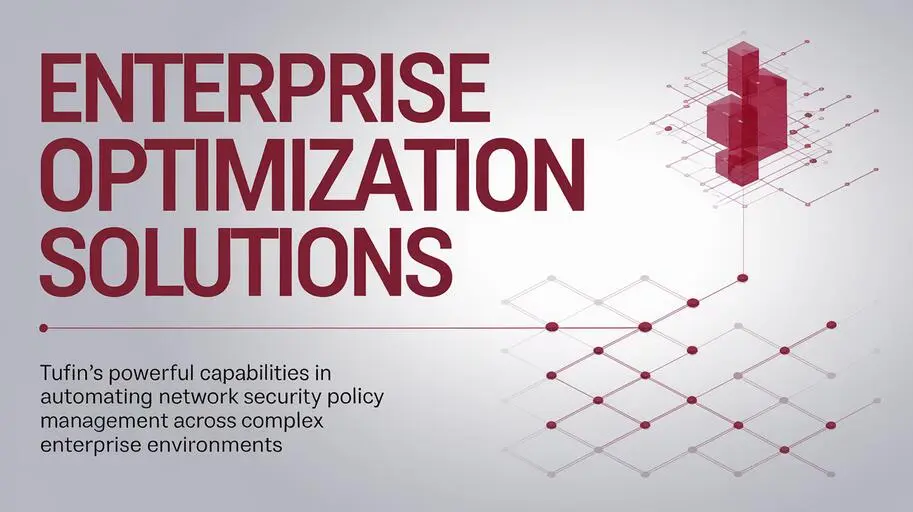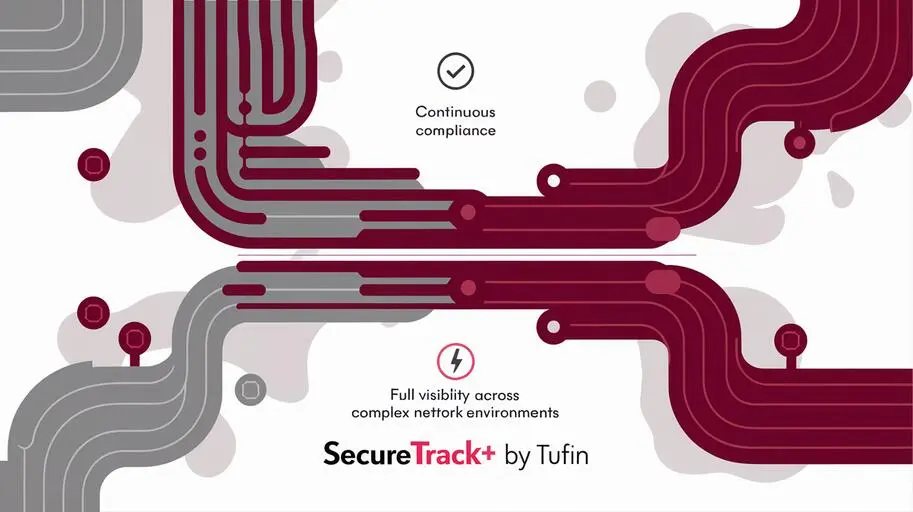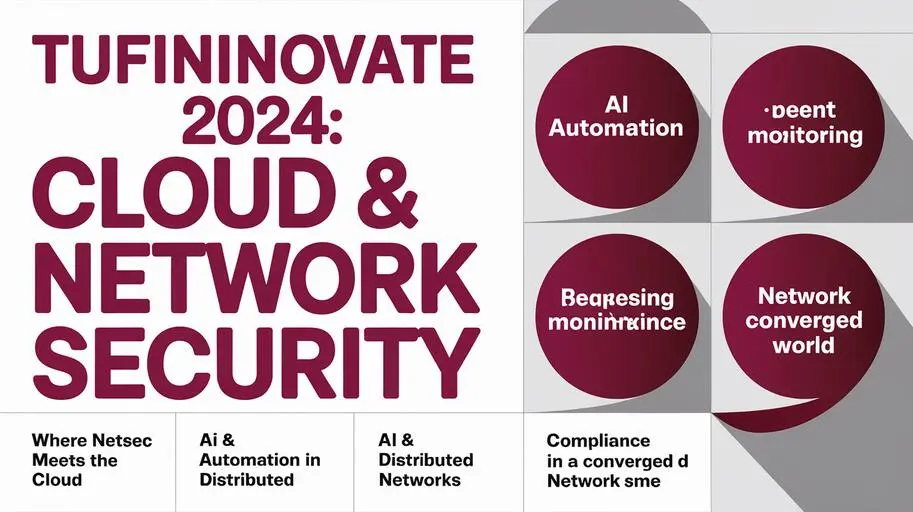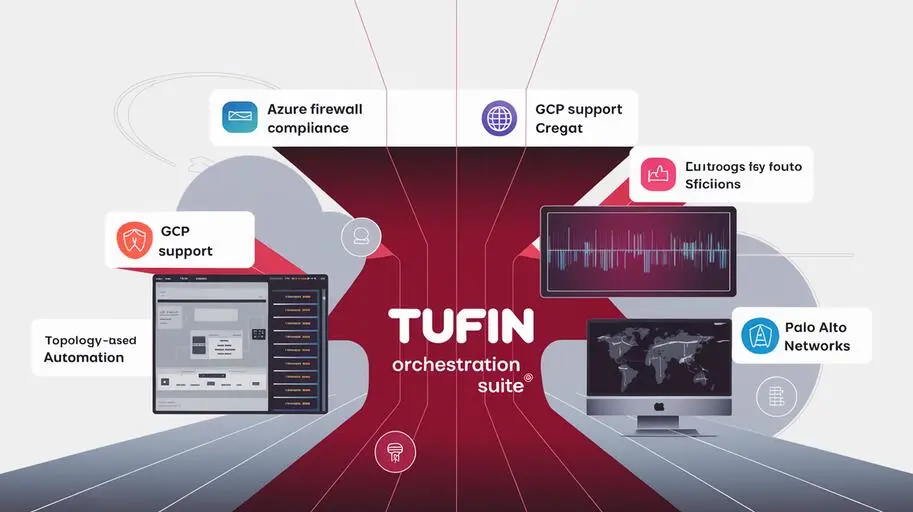
In today’s world, where network security and compliance are becoming increasingly critical (for instance, the rising number of data breaches and fines for GDPR non-compliance, as shown in the Verizon Data Breach Investigations Report), organizations face a vast number of regulatory requirements. Manually managing these requirements is a time-consuming, costly, and error-prone process. For example, a misconfigured firewall or a missed security update can lead to serious incidents. How can you ensure compliance with PCI DSS, HIPAA, GDPR, and other standards without wasting valuable time and resources? Tufin offers a solution to automate and simplify the compliance process, providing a comprehensive approach to compliance audit automation.
What is a Compliance Audit and Why is it Important?
A compliance audit is a systematic process of assessing how well an organization adheres to established security policies, standards, and regulatory requirements. It includes network inventory, vulnerability detection (e.g., configuration vulnerabilities, software vulnerabilities), analysis of network configuration (e.g., static and dynamic analysis of firewall rules), and preparation of reporting. Passing a compliance audit allows companies to:
- Avoid penalties and legal consequences for non-compliance with regulatory requirements (e.g., GDPR violation fines can reach 4% of the company’s annual turnover).
- Improve network security by identifying and eliminating vulnerabilities.
- Optimize change management processes (e.g., through automatic impact analysis of changes, simulating changes before implementation) and reduce risks associated with changes in firewall rules.
- Increase customer and partner trust by demonstrating commitment to security and compliance.
Tufin: A Solution for Automating Compliance Audits
Tufin is a platform that allows you to automate compliance audits and simplify compliance management. Tufin SecureTrack and Tufin SecureChange are key components of the Tufin solution, providing capabilities for matching network configuration with regulatory requirements (analyzing firewall rules, routing settings, encryption parameters), identifying discrepancies, and automating reporting.
Key Tufin Capabilities for Compliance Audits:
- Network Device Discovery and Inventory: Tufin automatically discovers and inventories all devices on your network, including firewalls, routers, switches, and servers, using SNMP, SSH, and vendor-specific APIs (Cisco, Juniper, Check Point, Fortinet, etc.).
- Security Policy Analysis: Tufin analyzes firewall rules and other security policies to identify discrepancies with regulatory requirements. Tufin interprets firewall rules by analyzing rule attributes (source, destination, service, action) and determines whether the rule meets the requirements.
- Mapping to Regulatory Requirements: Tufin automatically maps network configuration to regulatory requirements such as PCI DSS, HIPAA, and GDPR. Tufin uses a knowledge base that defines standard requirements and corresponding configuration parameters for network devices. The creation of custom compliance policies is also supported.
- Identification of Non-Compliance: Tufin identifies non-compliance with regulatory requirements and provides recommendations for remediation (e.g., “Firewall rule X needs to be changed to deny access to database Y from host Z”).
- Dashboards: Tufin provides dashboards that display the current compliance status of your network.
- Automated Reporting: Tufin automates the creation of compliance reports that can be used to demonstrate compliance to auditors.
- SIEM Integration: Tufin integrates with SIEM systems (Splunk, QRadar, Sentinel) to share information about vulnerabilities and security incidents.
How Tufin Helps Meet Various Regulatory Requirements
Tufin for PCI DSS Compliance
PCI DSS is the Payment Card Industry Data Security Standard that applies to all organizations that process, store, or transmit credit card data. Tufin helps organizations comply with PCI DSS by automating compliance audit processes, identifying vulnerabilities, and controlling access to credit card data. For example, Tufin helps comply with PCI DSS requirement 1.3.2 (Limiting traffic between untrusted networks and system components in the cardholder data environment) by automatically analyzing firewall rules and identifying rules that allow unauthorized traffic.
Tufin for HIPAA Compliance
HIPAA is the Health Insurance Portability and Accountability Act that protects the privacy and security of medical information. Tufin helps organizations comply with HIPAA by automating compliance audit processes, controlling access to medical information, and encrypting data. For example, Tufin helps comply with the HIPAA Security Rule (Access Control) by automatically identifying users and groups who have access to protected health information (PHI) and verifying compliance with the principle of least privilege.
Tufin for GDPR Compliance
GDPR is the General Data Protection Regulation that protects the personal data of citizens of the European Union. Tufin helps organizations comply with GDPR by automating compliance audit processes, controlling access to personal data, and ensuring transparency of data processing. For example, Tufin helps comply with GDPR Article 32 (Security of processing) by automatically monitoring and auditing the configuration of network devices, ensuring data encryption and protection against unauthorized access.
Tufin Solution Architecture for Compliance Audits
The Tufin solution consists of several key components:
- Tufin SecureTrack: provides a centralized view of network configuration, risk analysis, and reporting.
- Tufin SecureChange: automates the change management process, ensuring compliance with regulatory requirements and security policies.
- Tufin SecureApp: ensures the security of enterprise applications by automatically modeling security policies (e.g., by analyzing application traffic flows and automatically creating firewall policies) and controlling access to applications.

Tufin Integration with Other Security Tools
Tufin integrates with a wide range of other security tools, including:
- SIEM: Splunk, QRadar, Sentinel, ArcSight
- IDS/IPS: Cisco IPS, McAfee IPS, Palo Alto Networks IPS
- Vulnerability Management: Qualys, Tenable Nessus, Rapid7
- IAM: CyberArk, Okta, Microsoft Active Directory
Benefits of Automating Compliance Audits with Tufin
- Cost Reduction: Automating compliance audits reduces the costs of manual labor, errors, and penalties for non-compliance with regulatory requirements. For example, an organization can save up to 50% of the time and resources spent on compliance audits.
- Improved Efficiency: Automating compliance audits speeds up the process of identifying and resolving non-compliance issues. For example, the time to prepare compliance reports can be reduced from days to hours.
- Increased Accuracy: Automating compliance audits reduces the risk of errors associated with manual labor. For example, firewall configuration errors can be reduced by 80%.
- Improved Visibility: Tufin provides dashboards and reports that provide complete visibility into the compliance status of your network.
- Improved Change Management: Tufin automates the change management process, ensuring compliance with regulatory requirements and security policies.
- Reduced Risks: Tufin allows organizations to minimize risks associated with non-compliance with regulatory requirements.
Setting Up and Configuring Tufin for Compliance Audits
Setting up Tufin for compliance audits involves several steps:
- Installing and configuring Tufin SecureTrack and Tufin SecureChange.
- Adding network devices to Tufin SecureTrack.
- Configuring compliance rules for PCI DSS, HIPAA, GDPR, and other regulatory requirements (for example, using a graphical interface, command line, or API). Example configuration parameter: define rule PCI_DSS_3_4 { target = “firewall1”; description = “Firewall rules should prevent unauthorized access to cardholder data”; policy = “PCI DSS”; requirement = “3.4”; }
- Configuring reporting.
Best Practices for Using Tufin for Compliance
- Regularly conduct compliance audits with Tufin.
- Promptly resolve non-compliance issues identified by Tufin.
- Maintain up-to-date security policies in Tufin.
- Train security personnel to work with Tufin.
Troubleshooting Tufin During Compliance Audits
Various problems can occur when working with Tufin. Here are some troubleshooting tips:
- Check connectivity to network devices. For example, a device connection error: check the IP address, credentials, and device availability on the network. Check if the SSH/SNMP port is open on the device.
- Make sure the compliance rules are configured correctly.
- Review Tufin logs to identify errors.
- Contact Tufin support if you cannot resolve the problem yourself.
Scalability of the Tufin Solution for Compliance
The Tufin solution has high scalability and can support large and complex networks. Tufin can be deployed in both physical and virtual environments.
Tufin API for Audit Automation
Tufin provides a REST API that allows you to automate various compliance audit tasks, such as:
- Automatically adding network devices
- Automatically creating compliance reports
- Integration with other security systems
Sample code (Python) to retrieve a list of devices:
import requests
url = “https://
response = requests.get(url, headers=headers, verify=False)
if response.status_code == 200: devices = response.json() for device in devices: print(device[“name”]) else: print(f”Error: {response.status_code} – {response.text}”)
Using the Tufin API can significantly speed up and simplify the compliance audit process.
Ultimately, Tufin is a powerful tool that allows organizations to automate compliance audits, improve network security, and reduce risks. With its deep analysis, scalability, and broad integration capabilities, Tufin is the ideal solution for organizations of any size and complexity striving for compliance and reliable data protection. Optimize your network security today!
How can NWU help you implement Tufin?
NWU, as an official distributor of Tufin products and a certified partner, offers a full range of services for the implementation, configuration, and support of the Tufin solution for compliance automation. Our security engineers (holding Tufin Certified Security Expert certifications) possess deep knowledge and experience working with Tufin and can help you:
- Determine your needs in the field of security policy management.
- Develop an optimal solution architecture for Tufin.
- Perform the installation and configuration of Tufin.
- Integrate Tufin with other security tools.
- Train your staff to work with Tufin.
- Provide support and maintenance for the Tufin solution.
NWU has successfully implemented Tufin in large financial organizations and telecommunications companies, helping them comply with strict regulatory requirements and improve their security posture. Contact us to learn more about how NWU and Tufin can help you automate compliance audits and improve data security.
FAQs on: Compliance Audit with Tufin
-
What is a compliance audit and why is it important for my organization?
A compliance audit is a systematic assessment of your organization's adherence to established security policies, standards, and regulatory requirements. It is important because it helps avoid non-compliance penalties, improve network security, optimize change management, and enhance customer and partner trust. -
How does Tufin automate compliance audits?
Tufin automates compliance audits by discovering and inventorying network devices, analyzing security policies, mapping network configurations to regulatory requirements (e.g., PCI DSS, HIPAA, GDPR), identifying non-compliance issues, providing dashboards, and automating reporting. -
What are the key components of the Tufin solution for compliance auditing and what do they do?
Key components: Tufin SecureTrack (centralized view of network configuration, risk analysis, and reporting), Tufin SecureChange (automation of change management, ensuring compliance with regulatory requirements), and Tufin SecureApp (ensuring the security of enterprise applications). -
Which regulatory requirements does Tufin help comply with?
Tufin helps organizations comply with PCI DSS (Payment Card Industry Data Security Standard), HIPAA (Health Insurance Portability and Accountability Act), and GDPR (General Data Protection Regulation), as well as other regulatory requirements. -
What are the benefits of automating compliance audits with Tufin?
Automation with Tufin reduces costs, improves audit efficiency and accuracy, enhances network security visibility, improves change management, and minimizes risks associated with non-compliance. -
How do I configure Tufin to audit compliance with my specific regulatory requirements?
Configuration includes installing and configuring Tufin SecureTrack and SecureChange, adding network devices, setting up compliance rules for the desired regulatory requirements (PCI DSS, HIPAA, GDPR, etc.), and configuring reporting. -
What if I encounter problems while using Tufin for compliance auditing?
Check the connection to network devices, ensure that compliance rules are configured correctly, review the Tufin logs for errors, and contact Tufin support if you cannot resolve the issue yourself. -
How scalable is the Tufin compliance solution?
The Tufin solution is highly scalable and can support large and complex networks. Tufin can be deployed in both physical and virtual environments. -
Does Tufin provide an API for automating compliance audit tasks?
Yes, Tufin provides an API that allows you to automate various compliance audit tasks, such as automatically adding network devices, automatically creating compliance reports, and integrating with other security systems. -
How can NWU help with the implementation and support of Tufin?
NWU, as an official distributor of Tufin products, offers a full range of services for implementing, configuring, and supporting the Tufin solution, including needs assessment, architecture design, installation and configuration, integration, staff training, and support.




